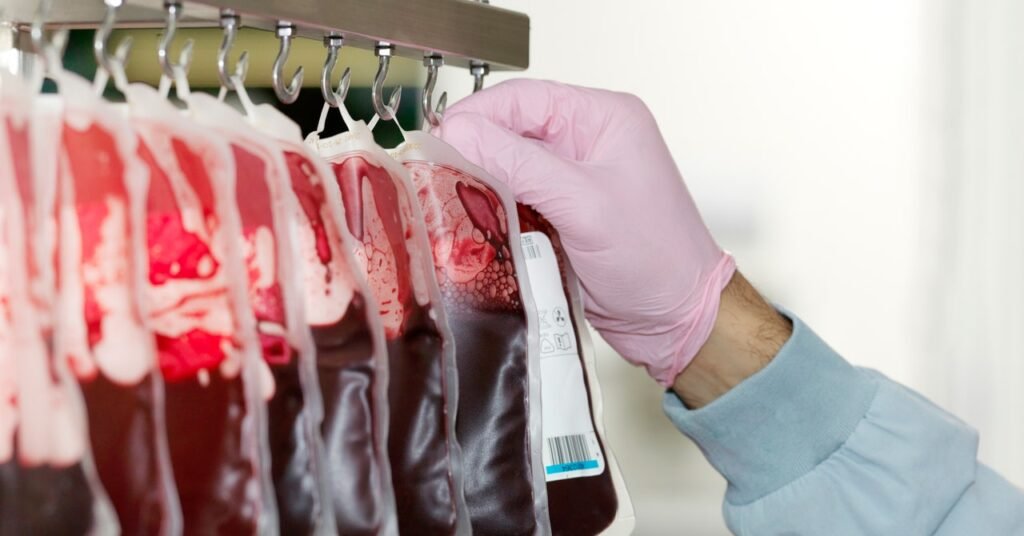There have been many challenges within the means of confirming the function of the MAL gene, together with a study by rival researchers that prompt a totally totally different gene could possibly be accountable. “We instantly thought, ‘Oh no, possibly all this work we’ve been doing has been wasted,’” remembers Tilley. “That was an actual low level.” Thornton chimes in: “However we have been satisfied we have been proper.”
In the long run, the opposite examine turned out to be flawed, and considered one of its authors later joined forces with Tilley, Thornton, and their colleagues. Collectively, the group was subsequently capable of show the importance of the MAL gene in some key experiments. First, following painstaking efforts to search out antibodies that will react with it, they established that the essential AnWj antigen (encoded by the MAL gene) was certainly current on the floor of most individuals’s purple blood cells. Then, they took AnWj-negative blood cells, missing stated antigen, and inserted an entire MAL gene into these cells. This had the hoped-for impact of producing the antigen on the cell floor, turning the cells AnWj-positive. That was definitive proof that the researchers had discovered the gene accountable for this uncommon purple blood cell variation.
Now that they know the gene in query, it ought to make it a lot simpler to search out AnWj-negative individuals who may turn out to be blood donors in order that, if individuals affected by this blood group ever want a transfusion, they’ll have one safely.
“What they did was actually intelligent,” says Sara Trompeter, a advisor hematologist and pediatric hematologist at College School Hospitals London. Trompeter additionally works for NHS Blood and Transplant however was not concerned within the AnWj examine. “They introduced it at a convention, a few of their early work. It was like watching a kind of detective exhibits the place they’re simply choosing up on tiny clues and testing hypotheses—issues that different individuals might need ignored.”
Mark Vickers, a hematologist on the College of Aberdeen, who additionally was not concerned within the examine, agrees that the outcomes are sturdy. “They’ve actually gone to city and finished some very good work,” he says. “So far as this blood group is anxious, that is going to be the unequivocal landmark paper.”
There are few indications as to what elements may affect somebody to have genes that make their blood AnWj-negative. One household of AnWj-negative people within the paper was Arab-Israeli, however the authors stress that there isn’t a clear hyperlink to ethnicity at this stage. The overwhelming majority of people who find themselves AnWj-negative are usually not genetically predisposed to it. Quite, they’ve such blood due to a hematological dysfunction or as a result of they’ve one of many cancers that may have an effect on their MAL gene. “It’s not actually detrimental. It’s simply suppressed,” says Thornton, referring to these circumstances.
There are questions remaining although. Infants don’t truly develop the AnWj antigen on their purple blood cells till they’re seven days previous. The mechanisms as to why that’s stay murky. Vickers suggests it could possibly be one thing to do with the number of modifications that occur in a fetus’s blood across the time of delivery—for instance, when its dependence on diet and oxygen from its mom’s blood ends.
Tilley, Thornton, and colleagues have been additionally accountable for discovering the genetic basis for the 44th blood group system, referred to as Er, in 2022, in addition to the MAM blood group system in 2020, amongst others. In the course of the previous decade or so, blood researchers all over the world have described roughly one new blood group system yearly, on common. “We’ve bought some extra within the pipeline,” teases Thornton.
There are nonetheless a handful of enigmatic blood samples—blood that reacts to different individuals’s blood in surprising methods—on the market, tucked away in lab storages. Scientists—aware of the sufferers whose lives are affected by this, who will battle to search out matching blood donors, or who, in some circumstances, might undergo devastating complications during pregnancy—recurrently pore over these samples, hoping to elucidate them at some point.
No less than yet one more thriller has been solved. Describing how she feels upon seeing her and her colleagues’ paper revealed ultimately, and reflecting on practically 20 years of labor, Tilley simply says: “It’s an enormous reduction.”

